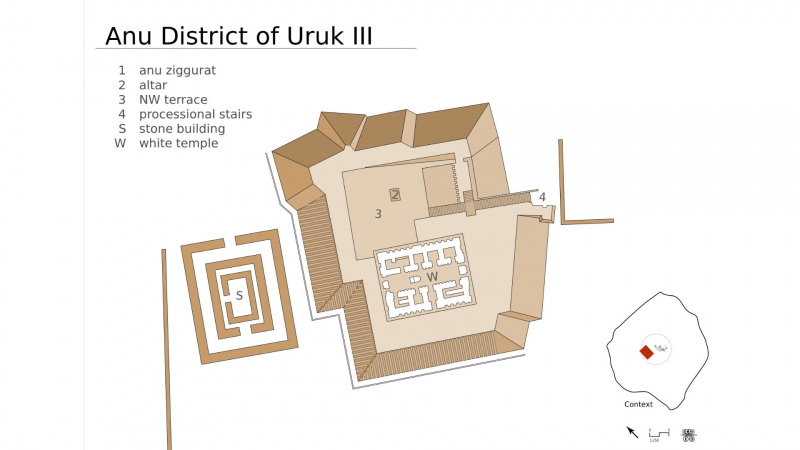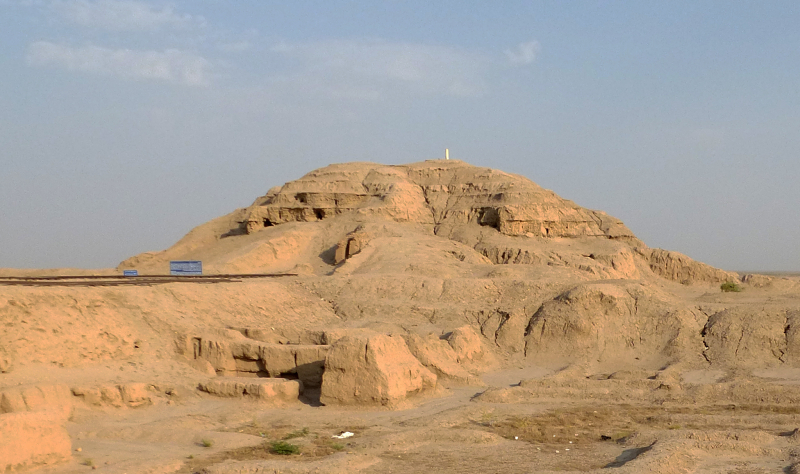The White Temple and Great Ziggurat of Uruk
The White Temple and Great Ziggurat, the most significant temple to the gods for the Sumerians, are found in Uruk, which is situated on the Euphrates in what is currently southeast Iraq. The legendary Sumerian hero Gilgamesh, who is depicted in the renowned epic poem of the same name, lived in Uruk, a significant city in early Sumerian culture and one of the first examples of narrative that has survived to the present day. Today, the ruins of one of ancient Sumer's most significant temples broil in the Iraqi sun. It takes a lot of imagination for tourists, historians, and archaeologists to imagine the ziggurat as it actually was 5,000 years ago. Despite the damage caused by time, the sun, the wind, and erosion, we can extrapolate from archeological data and literature to create a picture of the structure's appearance during the height of Sumer's supremacy.
The Sumerians built many of their temples on the highest points and as tall as the available building technology allowed because, like many other cultures, they believed the gods resided in the sky. A ziggurat is a pyramid with steps. It is a broad one in this instance, with a sizable flat region at the top where a huge temple was built. Here, priests would pray to the gods, make sacrifices, and listen for messages from the gods. The White Temple had a surface area of 56 x 72 square feet and was 40 feet (12 meters) high. It was made of brick because usable stone was scarce in the area (17 x 22 square meters). According to historians, the temple was built over the course of five years by 1,500 workers. Archaeologists have discovered the burned skeletons of a leopard and a lion within the temple, as well as a number of stone tablets that record the temple's financial transactions and a burn pit where it is thought that burnt sacrifices were offered to the gods.










